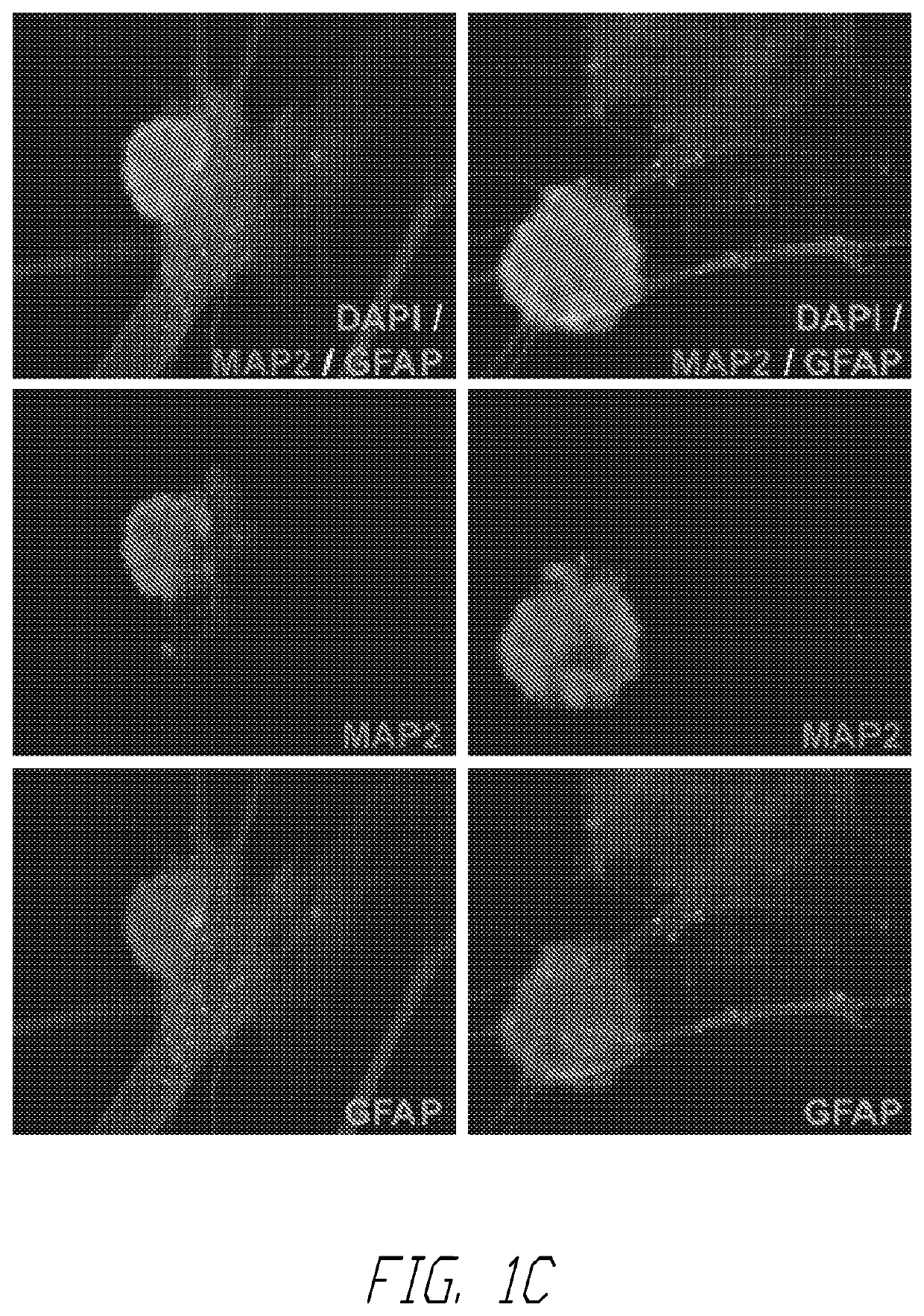Methods and compositions for generating hematopoietic cells
a technology of hematopoietic cells and compositions, applied in the field of methods and compositions for generating hematopoietic cells, can solve the problems of insufficient signal generation of de novo blood cells in vitro, significant number of patients (estimated 20-30% patients) who require bone marrow transplantation cannot receive life-saving treatment, and dna damage, protein damage, and/or lipid damage, etc., to achieve the effect of reducing or
- Summary
- Abstract
- Description
- Claims
- Application Information
AI Technical Summary
Benefits of technology
Problems solved by technology
Method used
Image
Examples
example 1
[0061]In murine development, the generation of definitive hematopoietic stem cells with lympho-myeloid adult repopulating ability occurs at day 10.5 post coitum (E10.5). These cells, capable of adult hematopoiesis, first appear in the aorta-gonad-mesonephros (AGM) region of the embryo proper, suggesting that signals from the AGM region enable de novo generation, survival and maturation of transplantable Hematopoietic Stem Cells (HSCs). In contrast, the hematopoietic progenitors emerging from the yolk sac (YS) at earlier time point during development are not capable of lympho-myeloid reconstitution of adult recipients. In the human embryo, a similar pattern of development has been suggested, with the YS giving rise initially to primitive lineage-restricted hematopoietic cells, while later the cells emerging in the major vessels of the Splanchnopleura / AGM region are endowed with definitive hematopoietic potential. In the AGM, specifically, the first HSCs have been shown to emerge from...
example 2
Introduction
[0078]Hematopoietic stem cells (HSC) replenish hematopoiesis throughout the lifetime of an individual and can be transplanted into patients to treat malignant and non-malignant blood disorders. The need to develop an alternative source of HSCs to matched adult donors, such as HSCs generated from pluripotent stem cells, requires increased understanding of the mechanisms of HSC development. During development, the first hematopoietic cells emerge from hemogenic endothelium in the embryonic aorta-gonad-mesonephros (AGM) region through endothelial-to-hematopoietic transition (EHT). The concurrence of neural crest stem cells in the AGM region coincides with the time of HSC emergence, suggesting a link between neural crest / catecholamines and hematopoietic development. Recently, catecholamine signaling has been reported to regulate HSC emergence in the AGM region, as the deletion of GATA binding protein 3 (GATA3), a crucial regulator of catecholamine production, compromised HSC...
PUM
| Property | Measurement | Unit |
|---|---|---|
| oxidative stress | aaaaa | aaaaa |
| frequency | aaaaa | aaaaa |
| endothelial morphology | aaaaa | aaaaa |
Abstract
Description
Claims
Application Information
 Login to View More
Login to View More - R&D
- Intellectual Property
- Life Sciences
- Materials
- Tech Scout
- Unparalleled Data Quality
- Higher Quality Content
- 60% Fewer Hallucinations
Browse by: Latest US Patents, China's latest patents, Technical Efficacy Thesaurus, Application Domain, Technology Topic, Popular Technical Reports.
© 2025 PatSnap. All rights reserved.Legal|Privacy policy|Modern Slavery Act Transparency Statement|Sitemap|About US| Contact US: help@patsnap.com



